Vemer PC1R Handleiding
Bekijk gratis de handleiding van Vemer PC1R (3 pagina’s), behorend tot de categorie Niet gecategoriseerd. Deze gids werd als nuttig beoordeeld door 49 mensen en kreeg gemiddeld 4.5 sterren uit 25 reviews. Heb je een vraag over Vemer PC1R of wil je andere gebruikers van dit product iets vragen? Stel een vraag
Pagina 1/3

3
4
1 5 FUNZIONAMENTOManuale d’Uso
CONTROLLO CARICHI 1 RELE’
Leggere attentamente tutte le istruzioni
DIMENSIONI
DESCRIZIONE STRUMENTO
INSTALLAZIONE
2
Ton Toff
Tbe
Tempo
Potenza
Setpoint
rilascio carico
Vemer S.p.A.
I - 32032 Feltre (BL) • Via Camp Lonc, 16
Tel +39 0439 80638 • Fax +39 0439 80619
e-mail: info@vemer.it - web site: www.vemer.it
V3IS00706-011
Mod. PC1R
Morsetti per alimentazione e misura corrente
Morsetti del relè
Led rosso: acceso indica carico scollegato
Tasti di programmazione
Display retroilluminato (30 secondi dalla pressione di un tasto)
Potenza misurata
Buzzer attivo (Tbe)
Carico rilasciato
Superamento setpoint
Icone per guida testuale funzione tasti
- ( ) tacitazione suoneria
- ( ) rifiuto rilascio carico
Strumento elettronico che misura il consumo di potenza attiva in impianti
monofase al fine di prevenire l’intervento per sovraccarico dell’interruttore
limitatore di corrente generale.
Il PC1R provvede al rilascio di un carico ritenuto non prioritario se il consumo
di potenza misurato supera la soglia prefissata (setpoint) ininterrottamente
per un tempo di preallarme impostabile (Ton). L’inserimento del carico avviene
trascorso un tempo di rilascio (Toff).
Codice Modello Descrizione
VE475000 PC1R Controllo carichi 1 relè
AVVERTENZE DI SICUREZZA
Durante l’installazione ed il funzionamento dello strumento è necessario
attenersi alle seguenti prescrizioni:
1) Lo strumento deve essere installato da persona qualificata, rispettando
scrupolosamente gli schemi di collegamento.
2) Lo strumento deve essere installato e messo in funzione in conformità con la
normativa vigente in materia di impianti elettrici.
3) Dopo l’installazione deve essere garantita la inaccessibilità ai morsetti di
collegamento senza l’uso di appositi utensili.
4) Non utilizzare lo strumento per scopi diversi da quelli indicati.
5) Lo strumento deve essere installato in un quadro elettrico chiuso
adeguatamente protetto.
6) Nella rete di alimentazione deve essere presente una disconnessione bipolare.
7) Nell’impianto elettrico a monte dello strumento deve essere installato un
dispositivo di protezione contro le sovracorrenti.
8) Prima di accedere ai morsetti di collegamento assicurarsi che i conduttori non
siano in tensione.
9) Non alimentare o collegare lo strumento se qualche parte risulta danneggiata.
10) In caso di malfunzionamento dello strumento non eseguire interventi di
riparazione e contattare direttamente l’assistenza tecnica.
11) Lo strumento può essere utilizzato in ambienti con categoria di misura III e
grado di inquinamento 2, secondo norma CEI EN 61010-1.
CARATTERISTICHE TECNICHE
• Alimentazione: 230Vac (-15% ÷ +10%) 50/60 Hz
• Autoconsumo massimo: 4 VA
• Inserzione di corrente diretta fino a 32A attraverso shunt
• Range setpoint impostabile: 0,8 ÷ 7 kW
• Range tempo di preallarme Ton: 0 ÷ 9999 secondi
• Range tempo di buzzer Tbe: 0 ÷ Ton secondi
• Range tempo di rilascio Toff: 0 ÷ 9999 secondi
• Uscita: 1 relè monostabile con contatto in scambio 16A / 250Vac
• Masselli per cavi con sezione massima di 6 mm 2
• Temperatura di funzionamento: -10°C ÷ +45°C
• Umidità di funzionamento: 10% ÷ 90% non condensante
• Temperatura di immagazzinamento: -10°C ÷ +65°C
• Contenitore: 2 moduli DIN
• Grado di protezione: IP20 / IP40 (sul frontale)
• Isolamento: rinforzato tra parti accessibili (frontale) e tutti gli altri morsetti
• Tipo di azioni: 1B
Per prevenire il distacco di tutta l’utenza a valle del contatore generale, il controllo
carichi PC1R deve misurare la stessa corrente del contatore di energia. Per questo
motivo la posizione ideale per il collegamento dello strumento è subito a valle
dell’interruttore generale.
Vanno individuati due carichi o gruppi di carichi così suddivisi:
• carichi non distaccabili, cioè quei carichi che non possono essere rilasciati
e che quindi non sono soggetti al controllo da parte del PC1R (anche se il loro
consumo deve essere misurato dal PC1R per determinare il consumo totale)
• carichi distaccabili, che sono quei carichi che possono essere rilasciati qualora
la potenza assorbita superi la soglia impostata
Nota: Il PC1R può essere utilizzato anche come un generico controllore di potenza
assorbita dai carichi sotto controllo ponendolo a monte del cavo preposto
all’alimentazione dei carichi medesimi. Chiaramente con questa seconda
applicazione non è possibile prevenire lo stacco del contatore generale di
energia, in quanto non sono conteggiati gli assorbimenti dei carichi non
controllati dal PC1R.
Superamento setpoint
Se la potenza supera la soglia
impostata, il simbolo e il valore
misurato lampeggiano e si attiva
la suoneria per la durata Tbe.
Trascorsi Ton secondi (fase di
preallarme) il carico viene rilasciato.
Rifiuto del rilascio carico
Durante le fasi di preallarme e di allarme (Ton)
(Toff) è possibile rifiutare il rilascio del carico
premendo il tasto . La durata del rifiuto del
distacco è di 9999 secondi (circa 2,5 ore) e
non è modificabile. Questa condizione viene
segnalata dall’accensione del simbolo .
Nota: una volta attivata questa funzione,
qualora si voglia rilasciare il carico
prima dello scadere dei 9999 secondi, è
necessario togliere e ridare alimentazione
allo strumento.
DEFINIZIONE E MODIFICA DEI PARAMETRI DI FUNZIONAMENTO
• [kW] rappresenta la soglia di intervento ovvero il valore massimo di Setpoint
consumo accettato. Oltre tale valore lo strumento provvede a rilasciare il carico.
• Ton [secondi] rappresenta il tempo di preallarme, ovvero per quanto tempo la
potenza deve essere superiore al setpoint prima che il carico venga effettivamente
rilasciato.
• Tbe [secondi] rappresenta il tempo di allarme acustico cioè per quanti secondi il
buzzer deve suonare durante la fase di preallarme.
• Toff [secondi] rappresenta il tempo di rilascio, ovvero dopo quanto tempo viene
re-inserito il carico.
Nota: il carico viene inserito solo se la potenza assorbita è inferiore al Setpoint.
Per accedere alla modifica o alla visualizzazione dei parametri di funzionamento
premere il tasto .
NORME DI RIFERIMENTO
La conformità con le Direttive Comunitarie:
2006/95/CE (Bassa tensione) 2004/108/CE (EMC)
è dichiarata in riferimento alle seguenti norme armonizzate:
• CEI EN 61010-1
• CEI EN 61000-6-2 e 61000-6-3
Carichi
non distaccabili
Carichi
distaccabili
LOGICA DI FUNZIONAMENTO
Tacitazione suoneria
Durante la fase
di preallarme
la suoneria può
essere tacitata
premendo il
tasto .
Reset parametri
Per caricare i parametri predefiniti
tenere premuto contemporaneamente
i tasti e per almeno 3 secondi. I
valori predefiniti sono:
Setpoint: 3,7 kW
Ton: 60 secondi
Tbe: 60 secondi
Toff: 120 secondi
Soglia di potenza
0,8 ÷ 7 kW 0 ÷ 9999
secondi
0 ÷ Ton
secondi
0 ÷ 9999
secondi
Ton Tbe Toff
>3 secondi

3
4
1 5 OPERATIONUser Manual
LOADS CONTROL 1 RELAY
Read all the instructions carefully
DIMENSIONS
INSTRUMENT DESCRIPTION
INSTALLATION
2
Ton Toff
Tbe
Time
Power
Setpoint
disconnection load
Vemer S.p.A.
I - 32032 Feltre (BL) • Via Camp Lonc, 16
Tel +39 0439 80638 • Fax +39 0439 80619
e-mail: info@vemer.it - web site: www.vemer.it
V3IS00706-011
Mod. PC1R
Terminals for power supply and current measurement
Relay terminals
Red led: on indicates disconnected load
Programming keys
Backlit display (for 30 s from the pressure of one key)
Measured power
Active buzzer (Tbe)
Disconnected load
Setpoint is exceeded
Icons for text guide keys function
- ( ) buzzer silencing
- ( ) disconnected load rejection
Electronic instrument to measure the consumption of active power in single-
phase systems to prevent the activation of the limiter switch of general current
for overload.
PC1R provides for the disconnection of a not priority load if the consumption of
measured power is higher than the prefixed threshold (setpoint) continuously
for a time of settable pre-alarm (Ton). The connection of the load occurs after a
disconnection time (Toff).
Code Model Description
VE475000 PC1R Loads control 1 relay
SAFETY WARNINGS
During the installation and the operation of the instrument it’s necessary to
observe the following instructions:
1) The instrument must be installed by a qualified person by observing
scrupulously the connection diagrams.
2) The instrument must be installed and activated in compliance with current
electric systems standards.
3) After installation, inaccessibility to the connection terminals without appropriate
tools must be granted.
4) Do not use the instrument for other purposes different from the one specified.
5) The instrument must be installed in a closed electrical panel adequately
protected.
6) In the power supply network a bipolar disconnection must be present.
7) A protection device against over-currents should be installed in the electrical
system, upstream of the device.
8) Before accessing the connection terminals, verify that the leads are not live.
9) Do not power on or connect the instrument if any part of it is damaged.
10) In case of malfunction do not perform repairs and contact immediately the
technical support.
11) The instrument can be used in environments with category of measurement III
and pollution degree 2, as per standards EN 61010-1.
TECHNICAL CHARACTERISTICS
• Power supply: 230Vac (-15% ÷ +10%) 50/60 Hz
• Maximum own consumption: 4 VA
• Direct current connection until 32A through shunt
• Settable setpoint range: 0,8 ÷ 7 kW
• Pre-alarm time range Ton: 0 ÷ 9999 seconds
• Buzzer time range Tbe: 0 ÷ Ton seconds
• Disconnection time range Toff: 0 ÷ 9999 seconds
• Output: 1 monostable relay with exchange contact 16A / 250Vac
• Blocks for cables with maximum section of 6 mm 2
• Operating temperature: -10°C ÷ +45°C
• Operating humidity: 10% ÷ 90% non condensing
• Storage temperature: -10°C ÷ +65°C
• Container: 2 modules DIN
• Protection degree: IP20 / IP40 (on the front panel)
•
Insulation: reinforced between accessible parts (front panel) and all other terminals
• Type of actions: 1B
To prevent the disconnection of all loads downstream of the general counter, the
loads control PC1R must measure the same current of the energy meter.
For this reason the ideal position for the connection of the instrument is immediately
downstream of the general switch.
Two loads or groups of loads must be located and so divided:
• not disconnectable loads, that is to say loads which can’t be disconnected and
that can’t be controlled by PC1R (even if their consumption must be measured by
PC1R to determine the total consumption)
• disconnectable loads, which can be disconnected if the absorbed power is
higher than the prefixed threshold.
Note: PC1R can be used also as a generic controller of absorbed power by loads
under control by placing it upstream of the cable for power supply of loads
themselves.
Clearly with this second application it’s not possible to prevent the
disconnection of the general energy meter, because the absorptions of the
loads not controlled by PC1R are not counted.
Setpoint is exceeded
If the power is higher than the set
threshold, the symbol and the
measured value flash and buzzer is
activated for Tbe duration.
After Ton seconds (pre-alarm phase)
the load is disconnected.
Rejection of load disconnection
During the phases of pre-alarm and alarm (Ton)
(Toff) it’s possible to reject the disconnection of
the load by pressing the key . The duration of
the disconnection rejection is 9999 seconds (2,5
hours about) and it’s not modifiable. This condition
is indicated by the switch on of the symbol .
Note: once this function is activated, if you want
the load is disconnected before the 9999
seconds, it’s necessary to switch off
and to switch on the power supply of the
instrument.
DEFINITION AND MODIFICATION OF OPERATION PARAMETERS
• [kW] represents the activation threshold that is to say the maximum Setpoint
value of accepted consumption. Over this value the instrument provides for the
disconnection of the load.
• Ton [seconds] represents the pre-alarm time, that is to say how long the power
must be higher than the setpoint before the load is actually disconnected.
• Tbe [seconds] represents the time of audible alarm, that is to say how many
seconds the buzzer must sound during the pre-alarm phase.
• Toff [seconds] represents the disconnection time, that is to say after how long the
load is reconnected.
Note: the load is connected only if the absorbed power is lower than the Setpoint.
To access the modification or the operation parameters display press the key .
REFERENCE STANDARDS
Compliance with Community Directives:
2006/95/EC (Low Voltage) 2004/108/EC (E.M.C.)
is declared with reference to the following standards:
• EN 61010-1
• CEI EN 61000-6-2 e 61000-6-3
Not disconnectable
loads
Disconnectable
loads
OPERATION LOGIC
Buzzer silencing
During the phase
of pre-alarm
the buzzer can
be silenced by
pressing
the key .
Reset parameters
To restore the default parameters,
press the keys and
simultaneously for 3 seconds at least.
The default values are:
Setpoint: 3.7 kW
Ton: 60 seconds
Tbe: 60 seconds
Toff: 120 seconds
Power threshold
0,8 ÷ 7 kW 0 ÷ 9999
seconds
0 ÷ Ton
seconds
0 ÷ 9999
seconds
Ton Tbe Toff
>3 seconds
Product specificaties
| Merk: | Vemer |
| Categorie: | Niet gecategoriseerd |
| Model: | PC1R |
Heb je hulp nodig?
Als je hulp nodig hebt met Vemer PC1R stel dan hieronder een vraag en andere gebruikers zullen je antwoorden
Handleiding Niet gecategoriseerd Vemer
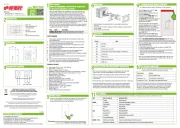
17 Juni 2025

5 September 2023

17 Juni 2023

17 Juni 2023

12 Juni 2023

5 Juni 2023

2 Juni 2023

31 Mei 2023

29 Mei 2023

24 Mei 2023
Handleiding Niet gecategoriseerd
- CEEM
- Naish
- Richgro
- GPO
- Soler & Palau
- Starlyf
- Proviel
- Auralex
- Katrin
- Soehnle
- MEPROLIGHT
- Induction Dynamics
- Kraftmax
- Sagemcom
- Chenbro Micom
Nieuwste handleidingen voor Niet gecategoriseerd

15 September 2025

15 September 2025

15 September 2025
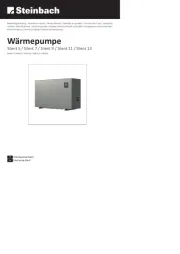
15 September 2025
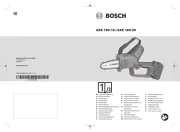
15 September 2025

15 September 2025

15 September 2025
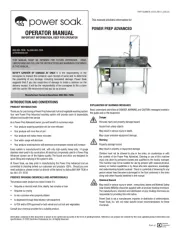
15 September 2025

15 September 2025
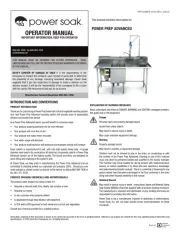
15 September 2025